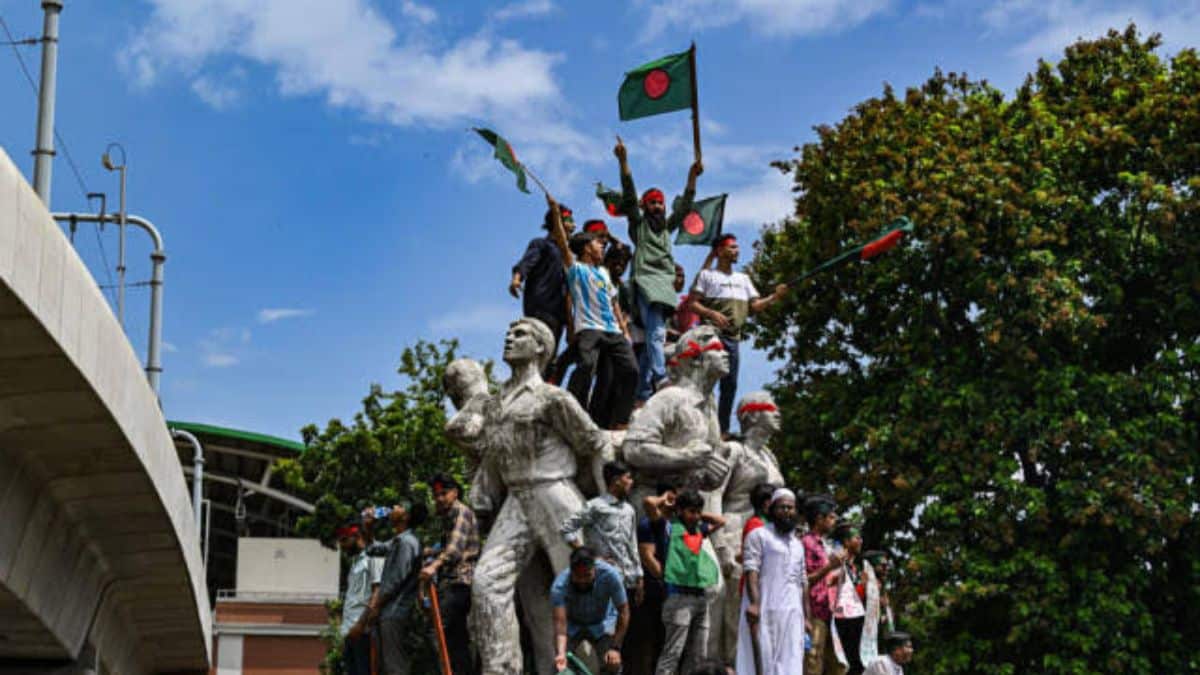 Image Credits: Yahoo News UK
Image Credits: Yahoo News UK
Thousands of protesters in Dhaka have defied curfew orders, storming the Prime Minister’s residence and vandalizing a statue of Sheikh Mujibur Rahman, the father of current Prime Minister Sheikh Hasina and a revered figure in Bangladesh’s history. The unrest marks a significant escalation in the country’s ongoing political turmoil.
The chaos unfolded following reports that Sheikh Hasina had resigned and fled the country, prompting widespread outrage and jubilation among the demonstrators. Despite heavy security measures, including barricades and armoured vehicles deployed across Dhaka, the sheer scale of the protests overwhelmed the forces, leading to the breaching of barriers and the storming of the Prime Minister’s official residence.
In addition to the attack on Hasina’s residence, protesters targeted the statue of Sheikh Mujibur Rahman, defacing the monument that symbolizes the legacy of the country’s independence. This act of vandalism underscores the intensity of the current discontent, which initially stemmed from protests against civil service job quotas but has since evolved into broader demands for Hasina’s resignation.
Local media estimates suggest that up to 400,000 people took to the streets, although this figure remains unverified. The scale of the violence has been unprecedented, with at least 98 people reported dead, including 14 police officers, making it the deadliest day of unrest to date. The total death toll since the protests began in early July has risen to at least 300.
The unrest marks a dramatic chapter in Prime Minister Hasina’s 15-year tenure, highlighting the deep-seated frustrations among the populace. What began as a series of protests over job quotas has morphed into a larger movement challenging the leadership and calling for significant political change. As Bangladesh grapples with this upheaval, the future of both the current administration and the country’s stability remains uncertain.
